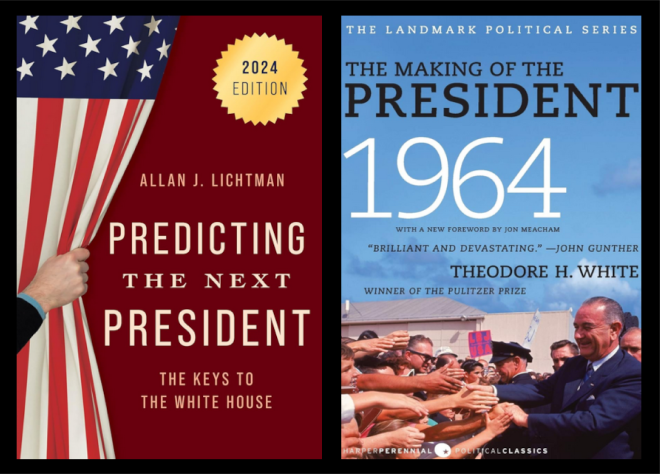Most contemporary political analysts are busy comparing the elections of 2016, 2020, and 2024, given that Trump, the Republican candidate for president, is the common denominator. But there are stark differences across the three elections. The Republican Party of 2024 bears little resemblance to the Republican Party of 2016, or even to the Republican Party prior to the insurrection of January 6, 2020.
A strong argument could be made that the presidential election of 2024 is similar to the presidential election of 1964. The Republican Party and its standard bearers are out of touch with the American electorate both in style and substance.
Theodore H. White (2010) provided a detailed account of the 1964 campaigns of the Republican challenger Barry Goldwater and the Democratic incumbent Lyndon B. Johnson.
The Republican Party of 1964 was a radical right-wing party in style and substance. Barry Goldwater, the Republican candidate for president in 1964, was fond of saying Radicalism in defense of liberty is no vice.
Referring to Barry Goldwater, Democrats in 1964 used the slogan In Your Guts, You Know He’s Nuts, a slogan that could easily be applied to Donald Trump or J.D. Vance today.
The Republican Party today is the Make America Great Again (MAGA) party. It employs a radical style, described as “weird” by today’s Democrats.
The Republican Party today is radical in espousing autocratic, Christian nationalist positions, as defined in Project 2025. Its program is radical in substance.
The historian Allan Lichtman (2024) has identified thirteen factors that predict the outcome of US presidential elections. He calls these the “Keys to the White House.” Note how many of the Keys for 1964 and 2024 align.

We fit a machine learning model to data from twenty-six presidential elections (1860 through 1960). Data from 1964 provided this prediction for the Democratic incumbent Johnson versus the Republican challenger Goldwater:
In 1964, the Democratic Party had a 95.6% chance of winning in the Electoral College.
In 1964, the Democratic Party won decisively with 61.1 percent of the popular vote and 486 Electoral College votes. Goldwater, the right-wing Republican senator from Arizona, won his home state along with Louisiana, Mississippi, Alabama, Georgia, and South Carolina, for a total of only 52 Electoral College votes.
Using a comparable machine learning approach, we fit a model to data from forty-one presidential elections (1860 through 2020). We used this machine learning model to predict the probability of a Democratic Party ticket led by Kamala Harris winning against the Republican challenger Donald Trump. (Updated with information from August 2024) what does this model suggest for the 2024 presidential election?
In 2024, the Democratic Party has a 75.8% chance of winning in the Electoral College.
Will this historical model, bolstered by machine learning, prove correct? Time will tell.
Note the recent election forecast from Allan Lichtman: Harris vs Trump! Prediction Professor Explains Which Way the Election is Leaning with Kamala Harris. Lichtman’s conclusion: A lot would have to go wrong for the Democrats to lose this election.
Political History #

-
Lichtman, Allan J. 2024. Predicting the Next President: The Keys to the White House (2024 Edition). Lanham, Maryland: Rowland & Littlefield. [ISBN-13: 978-8881800710] Publisher Link.
-
White, Theodore H. 2010. The Making of the President 1964 (Reissue Edition). New York: Harper Perennial/HarperCollins. (ISBN-13: 978-0061900617) Publisher Link. Initial edition published in 1965.